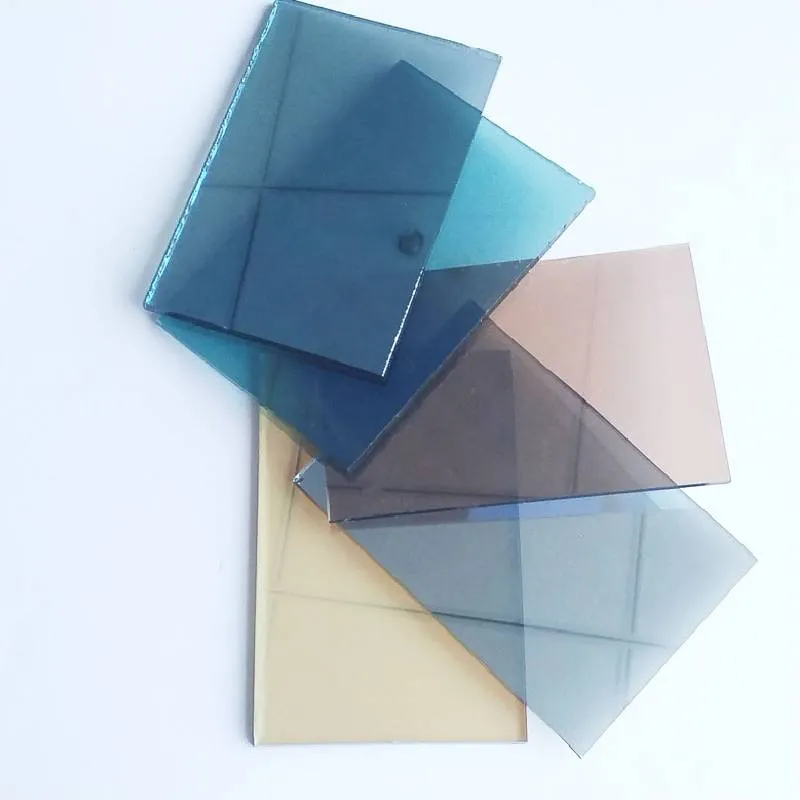Understanding Tempered Glass Composition and Manufacturing Process
Tempered glass, often referred to as toughened glass, is a type of safety glass that has been treated through controlled thermal processes to increase its strength compared to standard glass. It is commonly used in applications that require enhanced durability and resistance to thermal stress, such as in buildings, vehicles, and appliances. Understanding how tempered glass is made involves exploring its composition and the intricate manufacturing process it undergoes.
Composition of Tempered Glass
Tempered glass is primarily made from silica sand (SiO2), which constitutes the main ingredient of glass. When silica is melted, it undergoes a transformation from a solid to a liquid state, allowing it to be molded into various shapes. However, it doesn’t stop there; additional materials are often added to improve specific qualities of the glass. Common additives include sodium carbonate (soda), potassium carbonate, and calcium oxide, each contributing to the glass's behavior during the melting and forming processes.
In the production of tempered glass, the composition sometimes includes other oxides, like aluminum (Al2O3) and magnesium (MgO), which enhance its thermal and mechanical properties. The mixture of these materials is crucial as it affects the melting temperature and the final characteristics of the glass.
The Manufacturing Process
The journey to creating tempered glass begins with the basic ingredients, which are mixed and melted at high temperatures, typically exceeding 1,000 degrees Celsius (1,832 degrees Fahrenheit). The molten glass is then shaped into flat sheets or other configurations, depending on its intended use. This shaping is generally done using processes like float glass manufacturing, where the molten glass is floated on molten tin to create a smooth surface, or by pressing it into molds.
Once the glass has been formed, it undergoes the tempering process, which is key to its heightened strength. The tempering process involves two main stages heating and rapid cooling, known as quenching.
tempered glass is made of
1. Heating The formed glass sheets are heated to a temperature range of approximately 600 to 700 degrees Celsius (1,112 to 1,292 degrees Fahrenheit). This heating process allows the glass to undergo a form of internal stress relieving, preparing it for the next stage of cooling.
2. Quenching After reaching the desired temperature, the glass is rapidly cooled using air jets. This quick cooling solidifies the outer layers of the glass first, while the interior remains hotter for a brief period longer. As the exterior cools and shrinks, it creates a high level of compressive stress on the surface of the glass, while the interior remains in tension. This imbalance in stress is what provides tempered glass its remarkable toughness.
Benefits of Tempered Glass
The resulting tempered glass is about five to six times stronger than regular glass of the same thickness. Its enhanced strength allows it to withstand impact and withstand temperature fluctuations without breaking. In the event of failure, tempered glass shatters into small, blunt pieces rather than sharp shards, reducing the risk of injury.
Due to these characteristics, tempered glass is widely used in architectural applications, such as glass doors, windows, and facades. It is also employed in various household items, including shower doors, glass tabletops, and cooktops, where resilience to heat and impact is critical.
Conclusion
Tempered glass stands out in the realm of glass manufacturing due to its unique properties and the careful process it undergoes. From its raw materials to the intricate heating and cooling methods, the production of tempered glass ensures it meets safety standards and performs exceptionally in demanding environments. As technology advances, tempered glass will continue to play a pivotal role in modern design and construction, enhancing safety and aesthetic appeal in countless applications.
 Afrikaans
Afrikaans  Albanian
Albanian  Amharic
Amharic  Arabic
Arabic  Armenian
Armenian  Azerbaijani
Azerbaijani  Basque
Basque  Belarusian
Belarusian  Bengali
Bengali  Bosnian
Bosnian  Bulgarian
Bulgarian  Catalan
Catalan  Cebuano
Cebuano  Corsican
Corsican  Croatian
Croatian  Czech
Czech  Danish
Danish  Dutch
Dutch  English
English  Esperanto
Esperanto  Estonian
Estonian  Finnish
Finnish  French
French  Frisian
Frisian  Galician
Galician  Georgian
Georgian  German
German  Greek
Greek  Gujarati
Gujarati  Haitian Creole
Haitian Creole  hausa
hausa  hawaiian
hawaiian  Hebrew
Hebrew  Hindi
Hindi  Miao
Miao  Hungarian
Hungarian  Icelandic
Icelandic  igbo
igbo  Indonesian
Indonesian  irish
irish  Italian
Italian  Japanese
Japanese  Javanese
Javanese  Kannada
Kannada  kazakh
kazakh  Khmer
Khmer  Rwandese
Rwandese  Korean
Korean  Kurdish
Kurdish  Kyrgyz
Kyrgyz  Lao
Lao  Latin
Latin  Latvian
Latvian  Lithuanian
Lithuanian  Luxembourgish
Luxembourgish  Macedonian
Macedonian  Malgashi
Malgashi  Malay
Malay  Malayalam
Malayalam  Maltese
Maltese  Maori
Maori  Marathi
Marathi  Mongolian
Mongolian  Myanmar
Myanmar  Nepali
Nepali  Norwegian
Norwegian  Norwegian
Norwegian  Occitan
Occitan  Pashto
Pashto  Persian
Persian  Polish
Polish  Portuguese
Portuguese  Punjabi
Punjabi  Romanian
Romanian  Russian
Russian  Samoan
Samoan  Scottish Gaelic
Scottish Gaelic  Serbian
Serbian  Sesotho
Sesotho  Shona
Shona  Sindhi
Sindhi  Sinhala
Sinhala  Slovak
Slovak  Slovenian
Slovenian  Somali
Somali  Spanish
Spanish  Sundanese
Sundanese  Swahili
Swahili  Swedish
Swedish  Tagalog
Tagalog  Tajik
Tajik  Tamil
Tamil  Tatar
Tatar  Telugu
Telugu  Thai
Thai  Turkish
Turkish  Turkmen
Turkmen  Ukrainian
Ukrainian  Urdu
Urdu  Uighur
Uighur  Uzbek
Uzbek  Vietnamese
Vietnamese  Welsh
Welsh  Bantu
Bantu  Yiddish
Yiddish  Yoruba
Yoruba  Zulu
Zulu 

